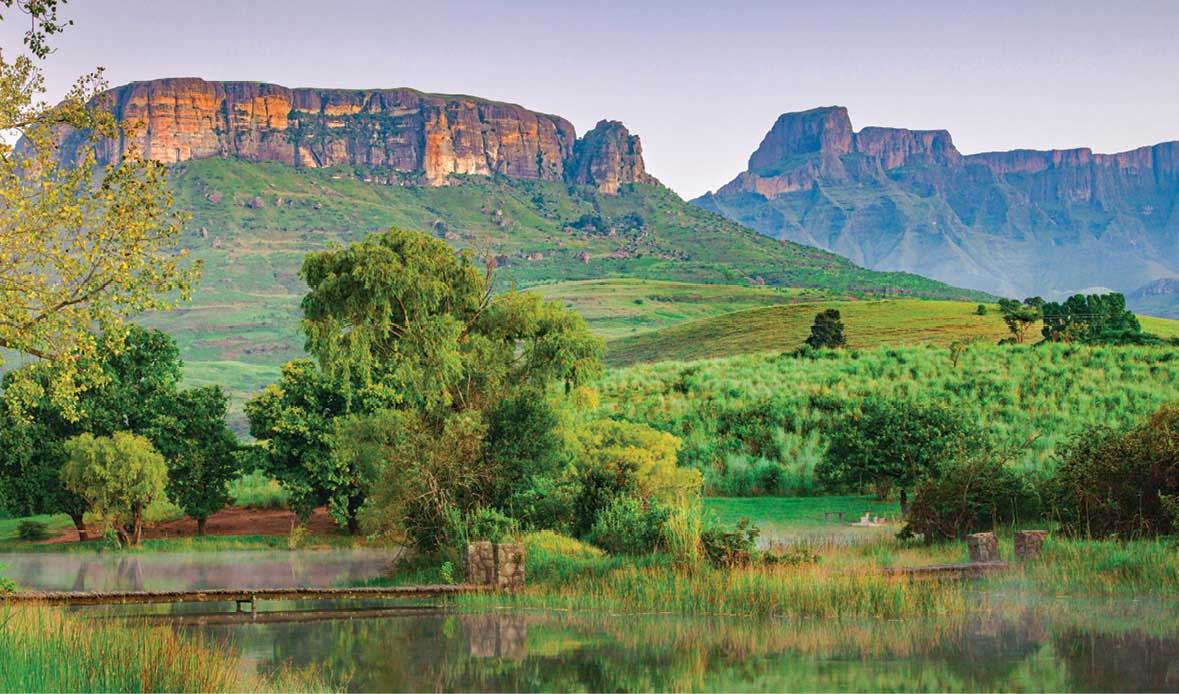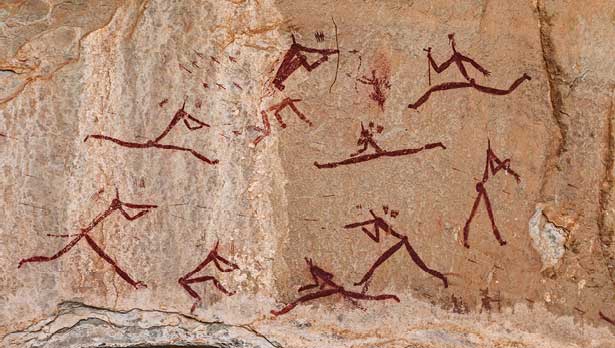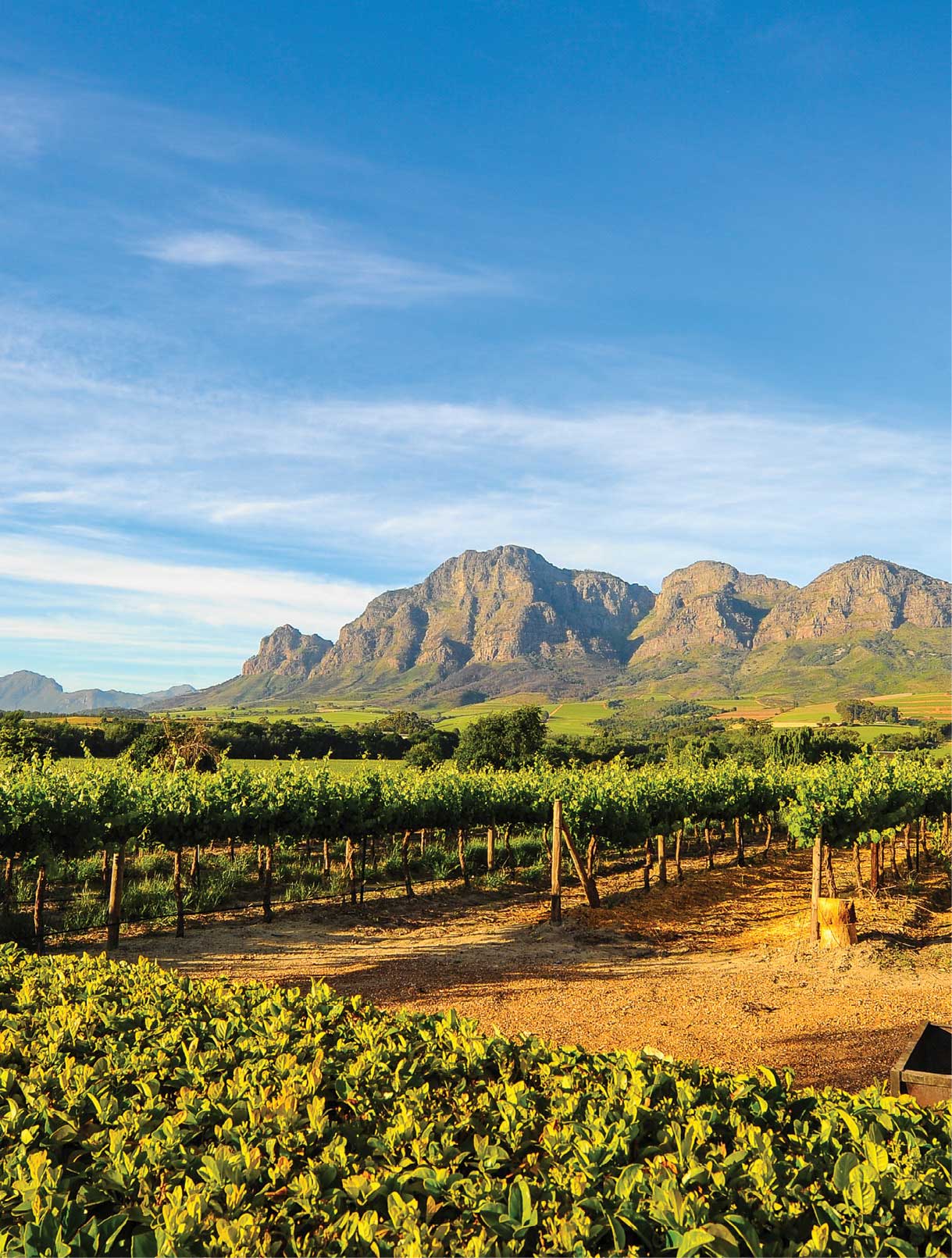Visit South Africa
Discover diverse wildlife and landscapes
by Penny E. Nakamura
Photo Kelly Arnold

Once you’ve visited South Africa, you’ll never be the same. There’s something magical about this southernmost part of the African continent, where the landscape varies from mountains to the savannah covered by wildlife preserves; from sandy beaches to a wine country that rivals Napa Valley.
While visiting the country, most tourists want to check off Africa’s Big Five, which includes lions, leopards, buffaloes, elephants, and the rhinoceros. Yet in South Africa, there’s so much more wildlife to discover, such as giraffes, zebras, jackals, baboons, monkeys and the South African penguins.
There are 10 designated UNESCO World Heritage sites throughout South Africa, including the Western Cape Floral region, known for being one of the world’s most diverse and abundant floral areas and home to about one-fifth of the vegetation in all of Africa. The uKhahlamba-Drakensberg National Park is referred to as an open-air mountain museum. Boasting more than 30,000 Bushman rock art hieroglyphics in its caves, this park is home to many endangered bird and plant species.
Love Affair With a Country
Americans seem to have a love affair with South Africa. The South African Tourism Ministry reports that Americans are the fastest growing group of tourists to the country from outside of the continent. It’s no wonder since the U.S. dollar to the South African rand is as strong as it’s ever been, making South Africa affordable.
Of all the African nations, South Africa has an infrastructure similar to the more developed countries of the north. This is especially noticeable in its bigger cities such as Cape Town, Johannesburg and Durban. In rural areas, known as the “bush,” the various African tribes still speak in their tribal languages and practice their tribal traditions. However, in most places throughout the country, people do speak English, making communication simple.

Get Wild—Take A Safari
Photo Courtesy: istock.com/vwPix
A safari exists for every taste and budget. Take a five-star luxury safari, where a base camp resort may include a pool and spa, plus gourmet meals. For the more budget conscience, there are camping safaris where travelers “rough it” in elevated tents. A plethora of other safari companies offer everything in between. What many safari outfitters have in common is that the guides are extremely knowledgeable. In an effort to keep tourists both safe and informed, plus preserve the wildlife and natural landscape, all guides must pass stringent exams given by the South African Tourism board, as part of a government-sanctioned certification process. The country’s most famous park for safari is Kruger National Park where dozens of safari companies venture; but there are also private preserves throughout the country, such as Sabi Sands. Regardless of what safari is selected, it’s an adventure like no other.
iSimangaliso Wetland Park in KwaZulu-Natal Province
This sub-tropical region stretches more than 136 miles along the East Coast from St. Lucia to the Mozambique border. iSimangaliso is a natural ecosystem ranging from dune, swamp and coastal forests to rocky and sandy shores, coral reefs, mangroves and woodlands. It’s the largest protected wetland in Southern Africa. It is also one of UNESCO’s World Heritage sites and one of the regions where travelers are likely to see hippopotamuses and crocodiles.
Understanding the History of Apartheid
To get a deeper understanding of modern South Africa, one should brush up on the history of the country. An educational starting point is in Johannesburg’s Apartheid Museum, the first of its kind to illustrate the rise and fall of the oppressive apartheid policies that governed South Africa at one time.
Nelson Mandela figures prominently at the museum. He was held in prison for 18 years on the remote Robben Island, and imprisoned 27 years total, for his political activism and efforts to bring equal rights for black South Africans. Visitors to the museum learn how he led the negotiations in the 1990s for a free South Africa and served as the first president of a democratic South Africa in 1994.
Cape Town on The Sea
photo stock.adobe.com/danedwards
After Johannesburg, Cape Town is South Africa’s second largest city, often referred to as the Mother City because it was the first area to be colonized. Cape Town has served as the port for sea voyagers on the Atlantic Ocean coastline since the 1400s; here, find a mélange of Malay, French, Dutch, Portuguese and African traditions captured in this dynamic beach city.
While in Cape Town, don’t miss the Kirstenbosch National Botanical Garden and the World Heritage Site of Table Mountain National Park. At Table Mountain, hike up a challenging 3-mile trail or take a gondola to the top for a magnificent view of the area.
The Cape Wine Country
From Cape Town, it is about an hour’s drive to the wine region of South Africa. The Dutch East India Company first transported and planted grapes in this region in the 1650s. Explore one of the six wine routes and go wine tasting in the two historical wine towns of Stellenbosch, founded by the Dutch, or the Franschhoek region, founded by the French.
It’s possible to hire a driver and car to safely sample wines on the route. Most hotels in the area can make reservations for visitors for the many daily wine tours.
Planning your holiday to South Africa
American citizens traveling to South Africa don’t need a visa to enter the country. Summer begins in Africa in November and lasts until February, making it an attractive time to visit for an escape from the winter weather in North America.

Penny E. Nakamura is a journalist both for magazines and newspapers and has written about a range of subjects across the globe. She lived in South Africa with her husband, Hal.

